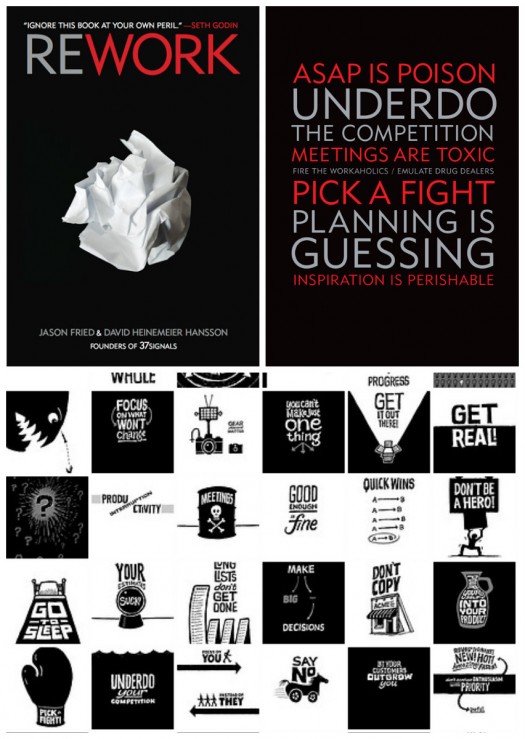photos from 37signals.com and jonathanmoore.com
Picked up a book to read on the flight to Singapore. It’s always been said, “don’t judge a book by it’s cover” but this was a book that jumped out at me when I was browsing B&N weeks prior. Even the title grabbed my attention. I work in software development and as an analyst and project manager, the idea of rework at first glance…SUCKS. it’s wasted effort, lost time, sunk costs and often it points to shoddy requirements analysis. So why would I want to buy a book whose title is “REWORK”?
The entire book feels like a counter-culture reading experience. The authors do live out their very own advice and convey it succinctly to the reader. Clear concise chapters of 1-2 pages with case studies from Costco, Starbucks, Zipcar…the author’s own credibility with their companies provide the foundation of trust for these techniques.
Some of the more notable lessons:
- Do fewer things. Do them amazingly well.
- Small decisions = progress. Busy-ness != progress
- Get your work out there. Make big mistakes before you become big.
A lot of the lessons are actually achieved in a scrum environment. Iterative development, incremental changes, and rapid deployment are all strong suits of scrum. Both Rework and scrum advocate for a shorter work days that are more focused, produces fewer distractions, less meetings, and fewer artifacts…ultimately leading to less rework.
One interesting example is the book advocates “Hire the best, regardless where they are” which means the people who develop might not be in similar time zones or even continents. This flies counter to scrum’s collocation needs to some degree. The authors would surely have an issue with Marisa Meyer and Yahoo’s office policy.
Some who read this might think it’s very basic and simple common sense. Perhaps it is. Something happens the longer you work for a corporation where some of these simple truths simply become lost. You start generating graphs for graphs-sake. Documentation and meetings suck up all the time, outlook becomes a clusterf- of colors, and the need to deliver all functionality yesterday becomes overwhelming. Everything is priority 1!
Final lesson. Don’t use 300 words when 2 will do: READ IT.
